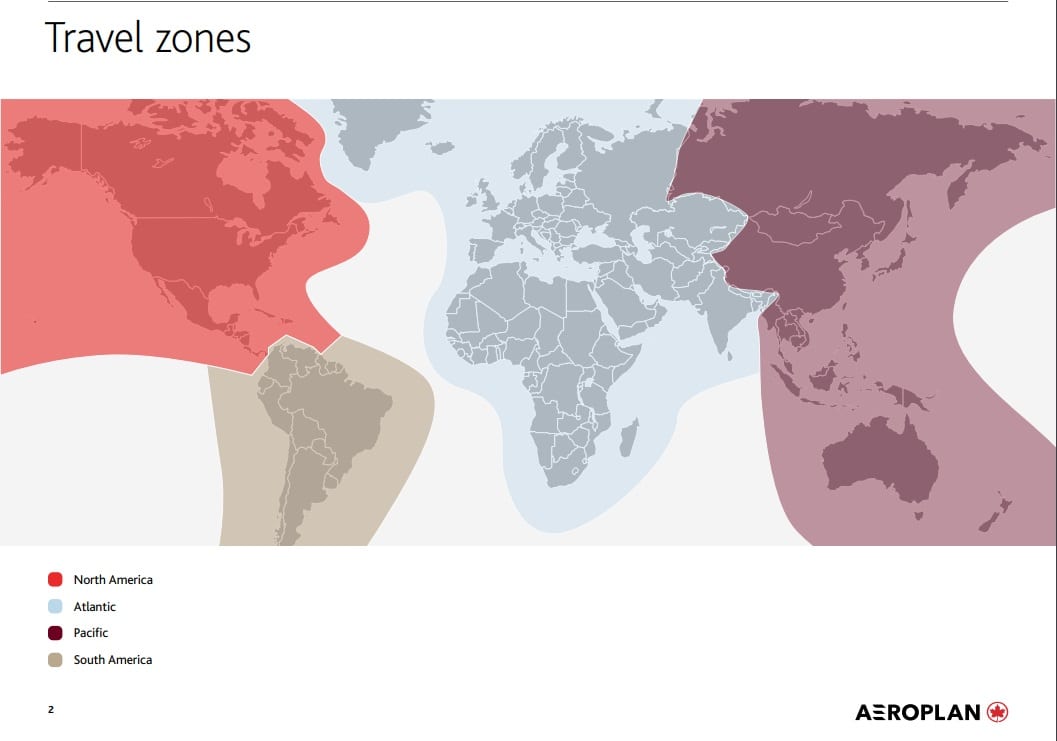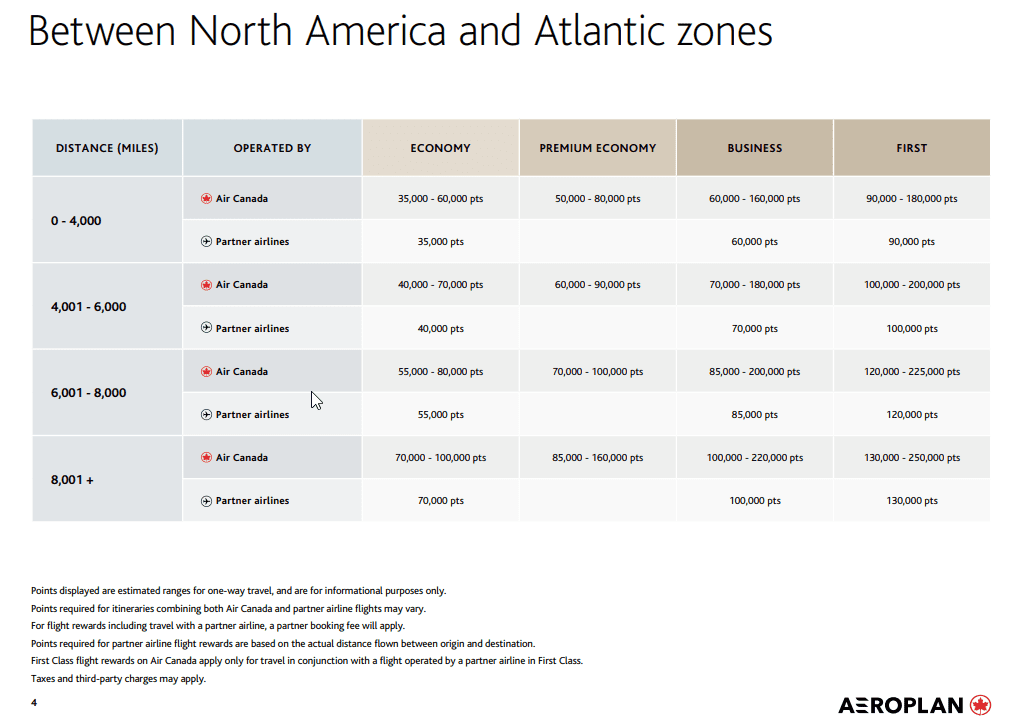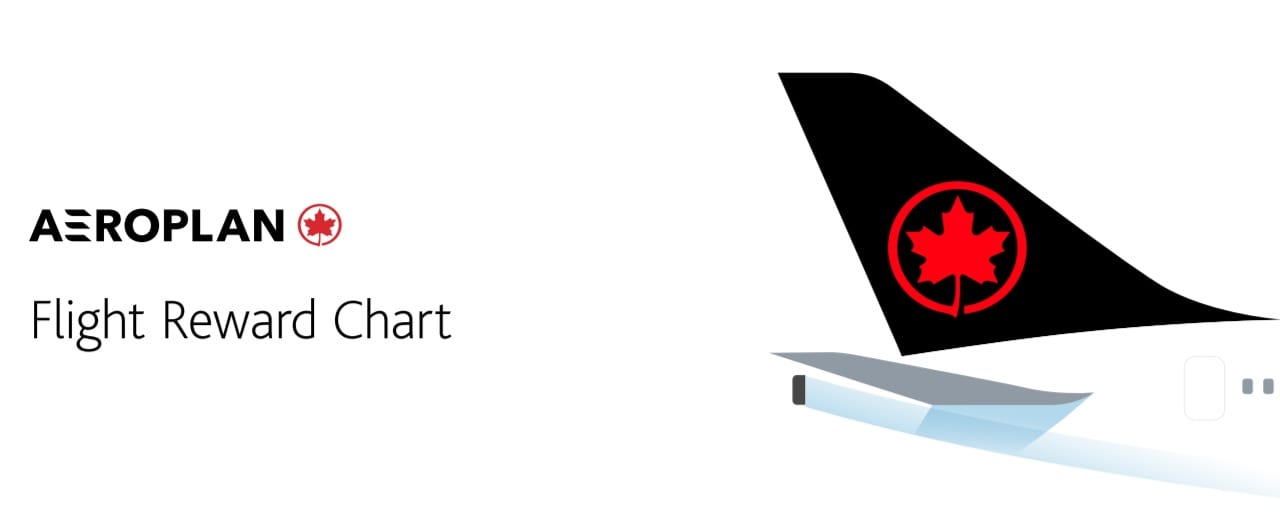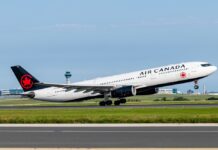NOTICE: This post references card features that have changed, expired, or are not currently available
Air Canada promised a new and improved Aeroplan loyalty program to debut in 2020. The award chart / booking details are out today and while there are of course some negative points, I think the new program is a big net win for most travelers. It’s definitely more complicated in some respects, but also a heck of a lot more fun.
High-level summary
A quick high-level summary of the changes:
Positive:
- One stopover will be allowed per one-way outside of the US & Canada for a fee of 5,000 miles. Note: Stopovers will no longer be allowed within the US or Canada regardless of itinerary origin or destination.
- Routing rules will be wide open. You can’t backtrack, but can transit (and stopover within) a third region
- Fuel surcharges are being eliminated
Negative:
- Award pricing is going up around 13% on average
- There will be a $39 CAD partner booking fee if you include partner airlines
- No more free stopovers on round trip awards
- Variable pricing on Air Canada awards or awards that mix Air Canada with other carriers
The new award charts are both region and distance-based
Direct link to the new full Aeroplan award chart
The most complex part of the new program is that Aeroplan is meshing a region-based chart with distance-based pricing. That is to say that you’ll first need to determine your starting and ending region and then calculate the distance from your starting point to ending point (based on actual distance flown) to determine the associated pricing. That sounds a little difficult, but in reality it will just take an extra couple of minutes when looking at the award chart (and they promise an improved website that should make this very easy). Use a tool like gcmap.com to calculate distances.
Here is a quick look at regions:
 That is a far simpler region-based chart that most programs in that there are only 4 regions. The complication comes from then determining the price based on distance. For example, for travel between North America and the Atlantic zone, you’ll pay anywhere from 60K-100K points each way in business class for a partner award and between 90K-130K in first class on a partner airline.
That is a far simpler region-based chart that most programs in that there are only 4 regions. The complication comes from then determining the price based on distance. For example, for travel between North America and the Atlantic zone, you’ll pay anywhere from 60K-100K points each way in business class for a partner award and between 90K-130K in first class on a partner airline.
 A couple of interesting notes based on that one award chart example that you’ll find interesting and applicable in other circumstances as well:
A couple of interesting notes based on that one award chart example that you’ll find interesting and applicable in other circumstances as well:
- Award pricing is the same from the US to Europe, Africa, the Middle East, or India. Add a stopover on a one-way to see two continents for 5K miles more.
- According to everything I’ve read thus far, routing rules indicate that you can route however you’d like provided that you do not backtrack. Since each award chart offers a top distance band of X number of miles or more, it looks like you could travel (for example) US to Australia (stopover) then to South Africa (destination) for the same price as flying to Australia alone (or even fewer miles in first class than a ticket to Australia alone). As an example:
- US to Australia at the highest distance band (11,000+ miles flown):
- 75K economy / 105K business / 140K first
- US to Africa at the highest distance band (8,001+ miles flown):
- 70K economy / 100K business / 130K first
- Add 5K for stopover in Australia:
- 75K economy / 105K business / 135K first with a stopover
- US to Australia at the highest distance band (11,000+ miles flown):
The same type of concept should apply to all of your award chart combinations when flying at the maximum distance band. Given the ability to add a stopover for 5,000 miles, the high end of the distance band would potentially be the most appealing.
The full new award chart is put together in a PDF (again, here’s a link to it) and it hasn’t yet been compressed into an easier-to-access chart. That’s not necessarily a bad thing: a little bit of complexity often keeps some of the sweetest spots alive for the longest.
The negatives aren’t terrible
The key news in all of this is that the negatives aren’t terrible and are mostly mitigated by positives.
The biggest negative that most people will notice immediately is that some of the award chart “sweet spots” are going up in price. Whereas you can currently book business class to Europe for 55K miles each way or first class for 70K miles each way, under the new chart you’ll pay anywhere from 60K-90K for business and anywhere from 90K-130K for first class. In some circumstances, that’s not a small increase. On the other hand, the elimination of fuel surcharges means that you’re potentially saving hundreds of dollars on Lufthansa group airlines. Nobody wants to pay more miles, but I’d rather pay more miles and fewer surcharges. I feel even better about that given the routing creativity that looks to be possible.
The $39 CAD partner booking fee stinks if you were booking an airline that didn’t previously add fuel surcharges. On the other hand, the equivalent of about $29 in USD today isn’t too egregious all things considered.
I’m sure that some people will be very disappointed to see the free stopover on a round trip eliminated. That’s fair. Combined with the award chart increases, it makes for a big bummer for those who typically book round trip flights.
On the other hand, I almost exclusively book separate one-ways to give me wider access to different flights / alliances / open-jaws / etc. I’m happy to pick up a stopover on a one-way for 5K miles as it is not common to be able to book a stopover on a one-way ticket. Keep in mind that you can not stopover within the US and Canada and you can only have one stopover per one-way.
My biggest reservation with the new program is how variable pricing will affect Air Canada awards. On the one hand, it could be that there will still be the equivalent of “saver” awards and the equivalent of “anytime” awards will vary in price. On the other hand, it may be more widely variable. This could make it difficult to plan if you’ll be including any segments on Air Canada.
Two bonuses: point pooling and an improved website
Two final bonuses worth mentioning: in the new program, you’ll be able to pool points with up to 8 members of your family. It looks like Aeroplan is going to let you define what family means to you, though they may make adjustments if there is abuse. At any rate, you will at least be able to combine redeemable points (not elite qualifying points) within a household.
The other potential piece of great news is that Aeroplan claims they will launch an entirely new booking engine that will enable you to more or less piece together any routing you want online. It remains to be seen how this will work or when it will launch, but if it’s true it could make the program a game-changer in terms of the ease of complex routings. Combined with liberal routing rules and the top ends of the distance bands, it could certainly make Aeroplan the go-to program for folks looking to build big trips.
Bottom line
These are big changes to the Aeroplan award chart and booking rules, but the net result looks pretty positive to me. Some will surely be unhappy as is the case with any award chart change, but overall the loses aren’t huge and the potential wins are. We will have a complete guide to the entire new Aeroplan program coming soon, but at first glance this looks pretty good.
H/T: One Mile at a Time






Ever since this post I can’t get Aeroplan(e) by the Red Hot Chili Peppers out of my head.
When calculating distance, is it between the origin and destination or we need to include all the legs ? LAX-AUH or LAX-FRA-AUH ?
Asking specifically w.r.t new Aeroplan
Include all the legs
Hi Nick
Unfortunately MPM will still be there for a one-way stopover. It’s now called “ circuitous routing “.
As a general rule of thumb, “circuitous routing” refers to flying 100% more than the direct distance between two points. However, there are also further rules on allowable transit regions, which prohibit routings such as YYZ–LIS–GRU and LAX–NRT–FRA. We’re seeking additional clarity on these “allowable transit” rules.
Prince of Travel goes into this in the post below. It’s near the end of the article.
https://princeoftravel.com/blog/new-aeroplan-minirtw/
Interesting. That wasn’t included anywhere in the info they released. I trust that Prince of Travel has it on good authority – disappointing that it’s not going to be as generous as everything else I’ve read makes it sound….thanks for passing this along.
[…] The new Aeroplan award chart: A nice net win […]
So the play will be to max out the distance chart and do 2-for-1 trips between far flung destinations. That’s pretty nice but may offer slight savings.
A round trip from west coast to Europe (my personal #1 interest) will be 100k round trip on economy. Up from 75k + surcharges.
Yeah, no.
When it says “based on actual distance flown,” does that mean their Pricing Predictor tool is only useful for nonstops, since flights with stops will be (possibly considerably) longer?
For instance, if you plug SEA and HND in to their pricing predictor, it says 55K in business class. But if you were routing SEA->SFO->HND, you’d be over the 5K miles and would be at 75K?
Basing it on actual flight distance makes finding actual practical sweet spots difficult.
Overall, I think calling this a positive change is jumping the gun. No surcharges is a big win but it’s a huge devaluation. Previously, Aeroplan filled a good niche for Star Alliance bookings: cheap awards to Europe if you could avoid the high surcharge airlines. What’s Aeroplan’s niche now that another program doesn’t do as well or better?
Maybe some clever bloggers will find the soft spot here, like adding a stopover to hit multiple zones for a reasonable price. But those will be hard for a lot of people to use.
This looks like a net loss to me until I hear about some killer way to make this work for the better.
Isn’t it cheaper now from US to India? From 100k/150k/210k to 70k/100k/130k.
US to Australia from 90k/160k/220k to 75k/105k/140k.
nvm, I thought the old chart is one way.
The price increases in miles are pretty substantial in a lot of cases, even at the lowest possible price. East coast to Asia for 70,000? In economy? From 77,500 for business? That’s just nuts. I admire your glass half full philosophy but this is a massive devaluation, pure and simple, albeit one with a bit of good mixed in.
Apologies, I’m reading on my phone and didn’t see that the above chart is specific to the Atlantic zone. It’s still a lot more pricey to fly West coast to Europe but not jaw dropping bad.
$39 fee for booking a partner award even if booked ONLINE? Total rip off. You can be sure they will end up collecting more from this bogus charge than from the surcharges which people avoided.
$39 CAD. About $29 USD. That’s a decent trade for being able to book Lufthansa first class from Newark to Frankfurt to Mumbai with a stopover in Frankfurt for 125K miles and no fuel surcharge.
I agree that I’d like to pay as little as possible, but I find fees of less than $50 reasonable enough (whereas fuel surcharges in the $600 or $800 range make it a lot less fun to use my miles).
$29USD.